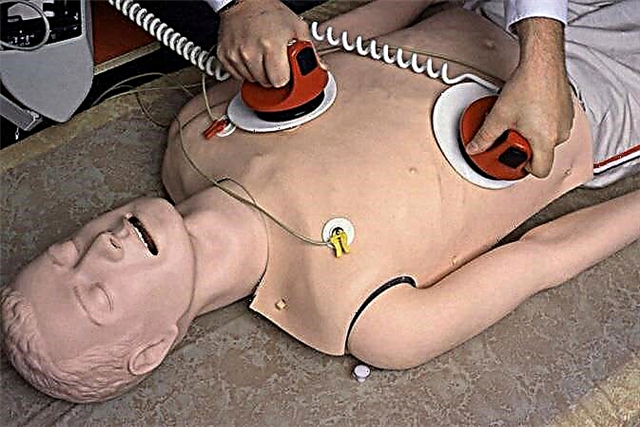Enam belongs to a group of antihypertensive drugs that lower blood pressure (BP). The agent is prescribed in the complex therapy of cardiovascular diseases, hypertension, renal pathology in patients with diabetes and endocrine disorders. The effect is achieved by suppressing the angiotensin-converting enzyme, inhibiting the synthesis of aldosterone, reducing vasospasm and stress on the heart.
Instructions for use
 The effect of "Enam" is due to the metabolism of the active substance Enalaprilat.
The effect of "Enam" is due to the metabolism of the active substance Enalaprilat.
The effects that develop after taking the pill:
- a gradual decrease in systolic and diastolic blood pressure without the development of unwanted tachycardia (rapid heartbeat);
- decrease in myocardial oxygen demand (excludes the possibility of constant hypoxia);
- prevention of myocardial hypertrophy;
- reducing the risk of early mortality from cardiovascular pathology.
In complex therapy, "Enam" prevents the progression of chronic renal failure (nephropathy) against the background of diabetes by improving blood flow. Enalapril does not affect the metabolism of carbohydrates and lipids, which makes it possible to prescribe the drug to patients with endocrine diseases.
Indications: at what pressure should the medicine be taken?
"Enam" is indicated for the treatment of patients with arterial hypertension (AH):
- essential (primary);
- renovascular (vasorenal) caused by stenosis, dysplasia or aortoarteritis of the renal vessels.
The drug is prescribed in complex therapy regimens for heart failure and coronary artery disease (IHD) for the prevention of lethal complications of cardiac pathology and early mortality.
Criteria for the appointment of "Enam":
- Hypertension with an increase in blood pressure more than 140/90 mm Hg According to the latest recommendations of cardiologists, indicators over 130/80 are regarded as the first degree of hypertension, which requires examination and treatment.
- High blood pressure on the background of myocardial ischemia.
- Reduced function of the left ventricle (according to the electrocardiogram and ultrasound of the heart).
BP over 200/100 - 240/140 mm Hg, indicating the development of a hypertensive crisis is a contraindication to taking the drug.
Before using the medication, you should consult a cardiologist, general practitioner or family doctor.
Methods of use and dosage of the drug
Enam tablets for oral administration are produced with a dose of the active substance - 2.5, 5 and 10 mg.
The maximum therapeutic effect is achieved if the schedule for admission is observed at the same time of the day, determined in conjunction with the attending doctor.
Principles of arterial hypertension therapy with Enam:
- The initial dose of the drug is 5-20 mg, depending on the stage and degree of hypertension.
- The usual maintenance dosage is 20 mg once a day, the maximum is 40 mg.
- With confirmed essential hypertension, therapy is started with 10 or 20 mg, in the absence of a decrease in blood pressure, it is doubled. The dose is adjusted based on the results of dynamic observation.
- With the development of hypertension against the background of severe renal (renal) pathology, the starting dose is 2.5 or 5 mg.
- In case of heart failure (while taking diuretics), 5 mg of "Enam" is prescribed, with a gradual increase to 20 mg.
- In renal pathology with a decrease in filtration and creatinine clearance (CC)> 30 milliliters per minute, the drug is prescribed in standard dosages (no more than 10 mg / day).
- With CC <30 ml / min, the intake is limited to 2.5 milligrams of Enalapril.
- Patients on hemodialysis are not prescribed more than 2.5 mg per day.
- Children from 6 to 16 years old with a body weight of less than 50 kg: starting dose - 2.5 mg, with a weight of more than 50 kg - up to 5 mg.
Increasing the dose is recommended with an interval of two to four weeks.
Contraindications
Most often, the use of "Enam" is limited to patients with hypersensitivity and allergic reactions to the components of the drug. Manifestations of intolerance:
- angioedema of the skin and subcutaneous tissue of the face, hands, lips;
- cough with shortness of breath or feeling short of breath;
- generalized itchy rash.
The reaction is dangerous by squeezing the lumen of the larynx, a high risk of suffocation against the background of hypoxia. The success of rescuing a patient depends on the timely provision of qualified assistance.
Contraindications to taking the drug:
- allergies to taking Enalapril or drugs from the group of angiotensin-converting enzyme inhibitors;
- a history of face or neck edema;
- planning to conceive, pregnant or lactating women;
- condition after removal of the kidney;
- bilateral stenosis of the renal arteries;
- blood diseases with a reduced number of leukocytes and platelets.
Combination with other substances
Instructions for the use of "Enam" include a section of interaction with other drugs:
- taking with other medicines that lower blood pressure, pain relievers, anesthetics or diuretics enhances the effect of "Enam" (the risk of a sudden drop in blood pressure);
- the combination with insulin or tableted glucose-lowering agents in diabetics increases the risk of hypoglycemia (lowering blood glucose less than 3.5 mmol / l) and the development of coma;
- in the treatment of psychiatric diseases with lithium preparations, there is an increase in the concentration in the blood of the latter, the development of intoxication;
- the combination with non-steroidal anti-inflammatory drugs eliminates the therapeutic effect of Enam, increasing the risk of developing renal failure;
- alcoholic beverages or narcotic substances enhance the effect of the medication, lead to a sharp drop in blood pressure;
- combination with diuretics - aldosterone antagonists ("Spironolactone", "Eplerenone"), it is dangerous to develop hyperkalemia;
- A combination of a drug with Aspirin, thrombolytic drugs, is considered safe.
Side effects
The undesirable reactions that occur while taking Enam, depending on the frequency of detection, are presented in the table.
| Side effect category | Clinical symptoms |
|---|---|
| Very often (for the majority) |
|
| Often |
|
| Rarely |
|
| Rarely |
|
Equivalents of "Enama" available on the Russian market
Enam is a drug produced by Doctor Reddis. Pharmacy chains offer affordable analogues: Renitek, Berlipril, Enap, Ednit, combinations with diuretics of different groups.
The quality of the drug is largely determined by the manufacturer: the domestic "Enalapril" may be less effective, cause more adverse reactions and is worse tolerated by patients.
Conclusions
"Enam" refers to medicines that lower blood pressure.The active ingredient, enalapril, in the process of metabolism, affects the enzyme system that regulates blood pressure and the volume of circulating blood in the human body. The drug is used in the complex therapy of cardiological pathologies: for the treatment of hypertension, coronary artery disease, concomitant kidney diseases against the background of cardiovascular and endocrine diseases. Continuous use reduces the risk of coronary events and prolongs the patient's life.



